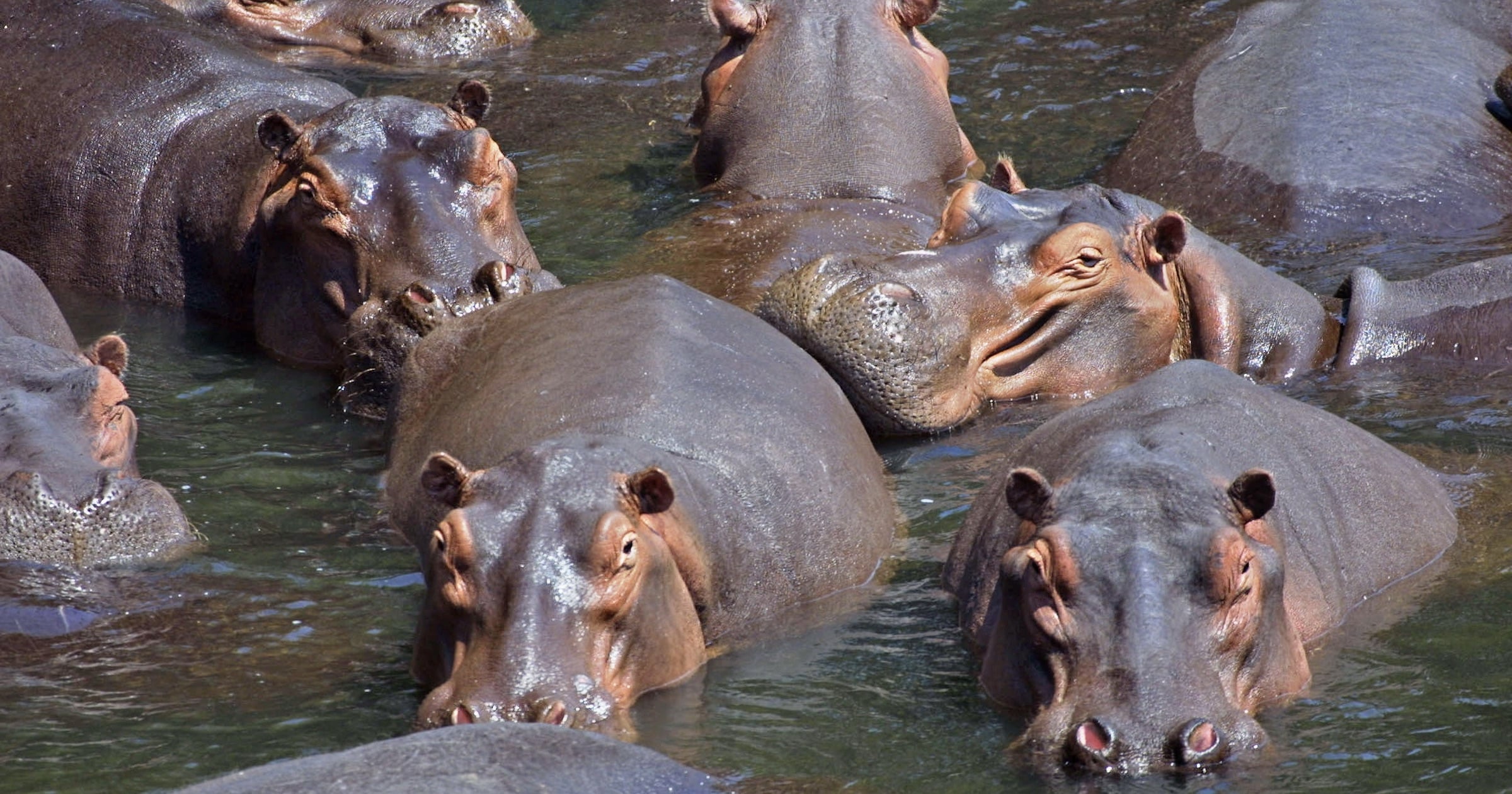 Evolution
Evolution
 Intelligent Design
Intelligent Design
 Paleontology
Paleontology
Notes on the Mysterious Origin of Hippos

Please consider the Abstract of my recently published paper, “Hippo Origin: Accidental DNA Mutations or Ingenious Design?”
Abstract
“To call hippos ‘charming’ may seem a bit of a stretch,” National Geographic comments, “but they are most certainly among the classic charismatic megafauna of the African continent.” Although the hippos (Hippopotamus amphibius L.) are not a major focus of attention in evolutionary biology, it may nevertheless be quite revealing to appreciate some points about the history of these powerful animals:
- The family Hippopotamidae appears abruptly in the fossil record — like all the other groups that I have so far investigated in detail. See here for many more examples.
- As compared to the variation possible within living species such as humans and others (see below), the two subfamilies and most of the hippo genera and species, which have been determined solely on the basis of anatomical and morphological criteria, may simply have been special populations of Mendelian recombinants from a genetical point of view (i.e., according to the genetical species concept). These recombinants (putative new subfamilies, species, and genera) also appear abruptly in the fossil record.
- The evolutionary derivation currently favored by most paleontologists, of the Hippopotamidae from Anthracotheriidae, has been disproved by the detailed investigations of researcher Martin Pickford (for instance 2009, 2011, 2022). However, his alternative, the Doliochoeridae as ancestors of the hippos, is equally doubtful.
- All three families mentioned above appear abruptly in the fossil record and subsequently display constancy or stasis over long periods of time.[1] In no case is there any documentation of a continuous evolution of one family from another by “infinitesimally small changes” (Darwin) or by mutations with “slight or even invisible effects on the phenotype” (Mayr). Otherwise, there would be no contradictory evolutionary derivations.
- The popular rejoinder asserts the incompleteness of the fossil record as the reason for these phenomena. But this rejoinder has in principlebeen refuted by (among many others) paleontologist Oskar Kuhn. As Kuhn states, “in many animal groups such a rich, even overwhelming amount of fossil material exists (foraminifers, corals, brachiopods, bryozoans, cephalopods, ostracods, trilobites, etc.), thatthe gaps between the types and subtypes must be viewed as real.” There is no reason that it would be different in the hippos if we had more fossils. The evolutionary “ghost lineage” will forever continue to consist mostly of “ghosts.”
- Evolutionary hypotheses and derivations reflect circular reasoning, and cladistics has not refuted this objection. Note that, “Decisions as to whether particular character states are homologous, a precondition of their being synapomorphies, have been challenged as involving circular reasoning and subjective judgements.” And now according to transformed cladistics “it is a mistake to believe even that one fossil species or fossil ‘group’ can be demonstrated to have been ancestral to another” (Nelson).
- The truth about hippo origins — apart from the abrupt appearance of this (and virtually all other) families in the fossil record, and drawn from their ingenious blueprints involving structures of irreducible complexity in probably all groups and generally enormous amounts of specified complexity on all biological levels (morphology, anatomy, physiology and genetics) — points to intelligent, ingenious design. Indeed, Georges Cuvier, as the “founding father of paleontology,” as well as renowned researchers such as Louis Agassiz, have argued for “One Supreme Intelligence as the Author of all things.”
You will find a discussion of these and many other details at “Hippo Origin: Accidental DNA Mutations or Ingenious Design?”
